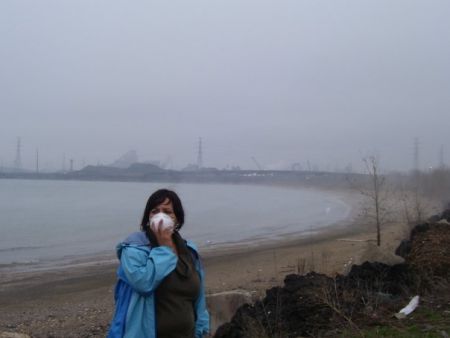STORY about IndigenousEnvironmentpublié le Novembre 28, 2010 by SandraCuffe
The Whole World is Downstream
Community members say negative impacts of the tar sands have a global reach
Also posted by SandraCuffe:
Also in Environment:
Community members impacted by tar sands development came together in Edmonton this weekend to make it explicit that the tar sands isn't just an issue in Alberta, or even just in Canada. Climate justice activists have long made the point that the tar sands are a leading driver of emissions worldwide.
But in addition to changing the climate, the direct impacts of tar sands extraction are already making themselves felt across the globe. Even though the principle extraction area is in Alberta, transportation and refining of tar sands oil is touching the lives of people from Madagascar to B.C. to Trinidad.
Due in large part to the outspoken resistance by Fort Chipewyan, other Indigenous and non-Indigenous communities now have more information and case studies to defend their own lands from the onslaught of the tar sands giga-project. Actual and proposed pipelines, refineries, and ports designed to transport tar sands oil from Alberta to destinations around the world crisscross the continent.
"One of the reasons we're fighting so much is because of what's happening there [in Fort Chipewyan]," explained Toghestiy, a hereditary chief from the Wet'suwet'en First Nation in north central British Columbia.
There is clear vocal opposition to the five pipelines proposed for construction through the 22,000 square kilometers of unceded Wet'suwet'en territory. grassroots Indigenous resistance has been a thorn in the side of Enbridge's proposed Northern Gateway pipeline that would transport oil from the tar sands to the coastal port of Kitimat, BC, in order to facilitate its export to Asia.
At the end of the pipelines are the refineries, which can have serious consequences for local residents. Visual artist and former urban planner Thomas Frank discussed the impacts of a BP refinery project in East Chicago, in northwestern Indiana.
Using his own research, Frank showed maps of East Chicago, with small pockets of neighbourhoods steeped in steel worker culture surrounded by a myriad of industrial projects, from steel mills to oil refineries. The poverty-ridden core communities, principally made up of Puerto Ricans, Mexicans, and African-Americans, live between smokestacks, toxic waste sites, and the Indiana Harbor Shipping Channel, which is considered the most contaminated waterway in the United States.
Ninety percent of the water in the Channel consists of wastewater from industry and sewage, explained Frank, adding that Indiana discharges 33% more toxins into waterways than any other state. The sheer quantity of toxic discharges in Indiana, with 6.4 million people, amounts to more than the last 26 states combined, the latter representing over 100 million inhabitants.
BP was cited in 2009 for releasing multiple times the permitted level of benzene in a period spanning six years. Permits issued to the company also allowed for 1600 pounds of ammonia to be released into Lake Michigan per day, in clear violation of the Clean Water Act. In fact, explained Frank, BP moved its training facilities from the area to Illinois, citing concerns about "quality of life" issues for the company's professionals.
Priya Ganness-Nanton, a community organizer from the Rights Action Group in Trinidad and Tobago, told the story of successful community struggle against an aluminum mill in the country. Ganness-Nanton hopes to take the lessons from the long history of struggle in Trinidad and use them to fight the tar sands exploitation recently announced by the government.
The site for the Vancouver local of The Media Co-op has been archived and will no longer be updated. Please visit the main Media Co-op website to learn more about the organization.

Commentaires
a true solution to clearing oil from soil
http://www.ted.com/talks/paul_stamets_on_6_ways_mushrooms_can_save_the_world.html
Dear friends, I am an environmental reseacher. I seek solutions to poverty and pollution cycles so we can break them without polluting. I urge you to watch this video taken from TED.com, where Paul Stamets shows how mushrooms can easily and rapidly cleans diesel, oil, gaz and petroleum from soil.
Thank you and all the best to you.
Mrs. Dominique Gladyszewski
the Distributed Fuzzing
the Distributed Fuzzing Framework was used to fuzz all ActiveX controls shipping with Volume License customers with active Assurance on these products will be one of the first to receive the set of products. Office 2010 Office 2007 Windows 7